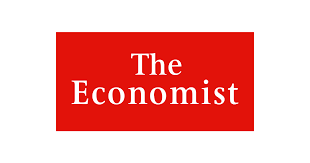Indicators that signal financial-market trouble are flashing

WATCHING financial markets can be like watching a horror film. A character walks into the darkness alone. A floorboard creaks. The latest spooky sign is the spread between the three-month dollar London interbank offered rate (LIBOR) and the overnight index swap (OIS) rate. It usually hovers at around 0.1%, but has recently climbed to 0.6% (see chart). As it widens, bankers are bracing for a jump scare.
Get our daily newsletter
Upgrade your inbox and get our Daily Dispatch and Editor’s Picks.
To see why, consider what each rate represents. LIBOR is the rate that banks charge other banks for unsecured loans. The OIS rate measures expectations for the federal funds rate, which is set by the central bank. As LIBOR rises above the OIS rate, that suggests banks fear it is getting riskier to lend to each other. (The gap was 3.65 percentage points in the depths of the crisis, after Lehman Brothers filed for bankruptcy.)
Market-watchers were already twitchy. Last November they shuddered as the yield curve, which plots the yields of Treasury bonds of different maturities, abruptly flattened. When that happens, it may be because expectations for growth and inflation—and hence for interest rates—have slumped. Then in February, as the stockmarket dropped, the VIX, an index of volatility dubbed the “fear gauge”, spiked.
Sometimes, though, an eerie sound is just the wind. Non-threatening explanations are possible for all three measures. Start with the yield curve. It can also be flattened by a central bank raising rates in response to buoyant growth today, while long-term expectations are unchanged. America’s recent tax cuts may be stimulating the economy now. But their long-term impact, most analysts agree, is less certain.
Likewise, the volatility reflected in the VIX can have a variety of causes. Volatility rises when a shock hits markets. Traders might be surprised by bad news about economic growth and future profits. Equally, they might be caught off-guard by good news, such as rising wages, that portends higher interest rates. Because higher rates depress the present value of future earnings, they are bad for stocks.
As for the LIBOR-OIS spread, one reassuring sign is that the price of credit-default swaps, which shows the premium investors must pay to insure against bank default, has barely risen. Some observers think the spread has widened because increased Treasury issuance, a consequence of tax cuts and higher government spending, is drawing short-term funding away from banks. A second possibility is that corporate-tax cuts have encouraged firms to invest or make acquisitions when they would previously have bought banks’ bonds, forcing banks to borrow more in LIBOR markets. On top of that, market jitters earlier in the year encouraged investors into low-risk funds, which buy more Treasuries than bank debt. This raises the funding costs of banks relative to Treasuries.
All three of the metrics that have had traders fretting are signs that financial conditions, more broadly, are tightening. That can be worrying; it means less lending and slower growth. But it may be intentional. The Fed has been raising rates for over two years precisely because it is trying to apply the brakes, gently, to the economy. Yet for most of that time, markets have boomed defiantly, leading hawks to warn that the central bank was letting a bubble inflate—ie, that financial conditions were too loose, the opposite worry.
The biggest risk has always been that the Fed might have to act abruptly to see off inflation. On April 18th the IMF warned that markets look exposed to a sudden tightening in financial conditions, perhaps triggered by an unexpected rise in interest rates. Threats to the economy can lurk in obscure corners of financial markets. They can also be found in Washington, DC.
This article appeared in the Finance and economics section of the print edition under the headline “Jitterbugs”










